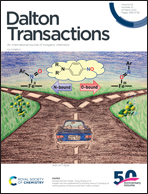Several carbon-coated Ga2O3 anodes: efficient coating of reduced graphene oxide enhanced the electrochemical performance of lithium ion batteries†
Abstract
Gallium oxide as a novel electrode material has attracted attention because of its high stability and conductivity. In addition, Ga2O3 will be converted to Ga during the charge and discharge process, and the self-healing behavior of Ga can improve the cycling stability. In this paper, we synthesized Ga2O3 nanoparticles with a size of about 4 nm via a facile sol–gel method. Meanwhile, we employed three types of carbon materials (reduced graphene oxide, mesoporous carbon nanofiber arrays, and carbon nanotubes) to avoid the aggregation of Ga2O3 nanoparticles and improve the conductivity of Ga2O3 during the discharge/charge process as well. Among the three samples, the deactivating defective sites and special carbon matrix of reduced graphene oxide can provide more attachment points for Ga ions, so the Ga2O3 nanoparticles can be more closely and uniformly distributed on rGO. Benefitting from the perfect combination of reduced graphene oxide sheets and Ga2O3 nanoparticles, a stable capacity of the Ga2O3/rGO electrode can be maintained at 411 mA h g−1 at a current density of 1000 mA g−1 after 600 cycles. We believe that this work provides a novel and efficient way to improve the electrochemical stability of Li-ion batteries.



 Please wait while we load your content...
Please wait while we load your content...